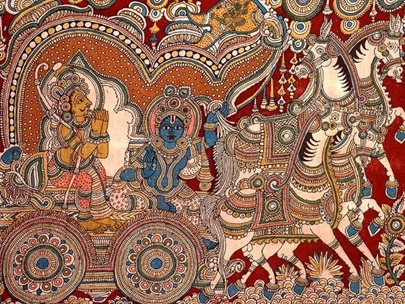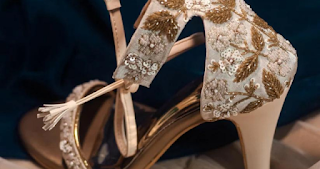The Mystical Art of Kalamkari - Around Always
Kalamkari is as mystical as a textile, it has more unseen character than just being a fabric used for clothing or home. Kalamkari is just more than a textile to an experience that culture has witnessed over centuries.
The Making
The process of making Kalamkari
involves 23 steps. From the natural process of
bleaching the fabric, softening it, sun drying, preparing natural dyes, hand
painting, to the processes of air drying and washing, the entire procedure is a
process that requires precision and an eye for detailing.
The cotton fabric used for Kalamkari is first treated with a solution of cow
dung and bleach. After keeping the fabric in this solution for hours, the
fabric gets a uniform off-white color. After this, the cotton fabric is
immersed in a mixture of buffalo milk and Myrobalans. This avoids smudging of
dyes in the fabric when it is painted with natural dyes. Later, the fabric is
washed under running water to get rid of the odor of buffalo milk. The
fabric likewise, is washed twenty times and dried under the sun. Once the
fabric is ready for painting, the artist sketches motifs and designs on the fabric.
Post this, the Kalamkari artists prepare dyes using natural sources
to fill colors within the drawings.
Incorporating minute details, the Kalamkari use ‘tamarind twig’ as a pen, to sketch beautiful motifs of Krishna Raas-Leela, Indian gods and goddesses
like Parvati, Vishnu, Shri Jaganath; designs of peacocks, lotus; and scenes from
the Hindu epics like Mahabharata and Ramayana.
Colors of Kalamkari
Kalamkari art primarily uses earthy colors like indigo,
mustard, rust, black and green. Natural dyes used to paint colors in Kalamkari
art are extracted from natural
sources with no use of chemicals or artificial matter. For instance,
craftsmen extract black color
by blending jaggery, water, and iron
fillings which they essentially use for outlining the sketches. While
mustard or yellow is derived by boiling pomegranate peels, red hues are created
from the bark of madder or again. Likewise, blue is obtained from indigo
and green is derived by mixing yellow and blue together.
Types of Kalamkari
Last not least, everyone must learn these age-old techniques, for its
revival, for it to survive and grow, and to know better Indian History, culture, and textiles that were practiced from generation to generation. It is
an individual’s commitment to adopt a craft and bring it to the forefront of the modern world and mainstream home and lifestyle fashion.
A variety of accessories, including potlis, belts, and other items, are available for all occasions at Around Always. Products made by hand and hand-embroidered patterns. Visit Now!


.jpg)
.png)

Comments
Post a Comment